
- News
- Basics
- Products
- JP Job shop
- Exhibition
- Interview
- Statistic
- PR
- Download
- Special contents
News
August 2, 2024
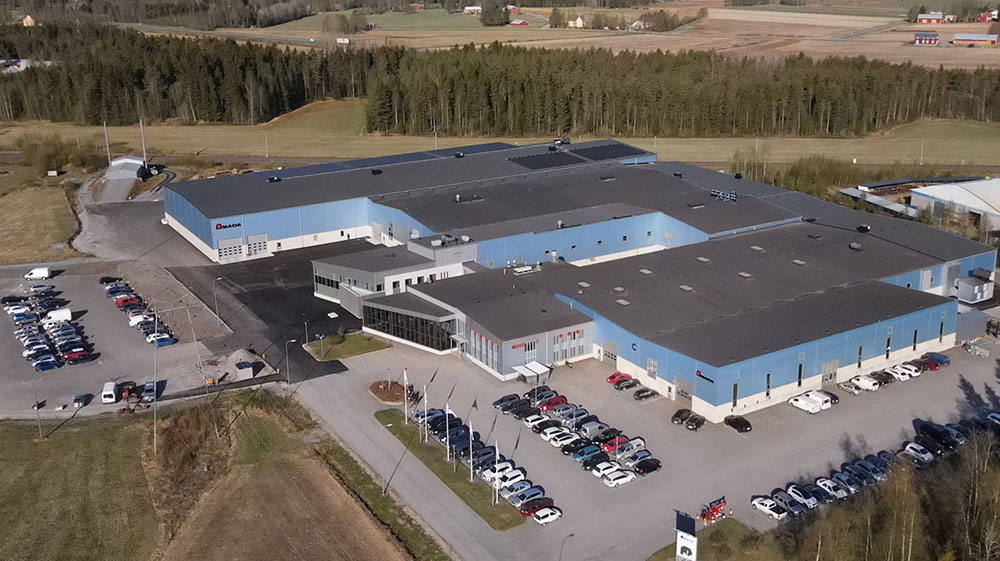
AMADA has expanded its automation equipment manufacturing base in Northern Europe, Finland. With an investment of approximately JPY 2 billion, the company has increased the size and production capacity by 1.5 times. With the growing demand for automation in Europe due to labor shortages, AMADA aims to provide a quick supply of automation equipment.
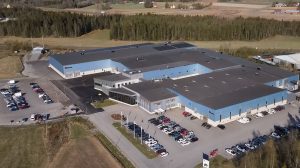
AAE factory expanded to 1.5 times its original size.
With an investment of approximately JPY 2 billion, AMADA has expanded the factory building area from 11,800 square meters to 17,000 square meters and increased the annual production capacity from 265 units to 400 units.
On June 5, AMADA reopened the renovated automation equipment factory for sheet metal processing machines in Bennäs, Pedersöre, Finland, under AMADA Automation Europe (AAE).
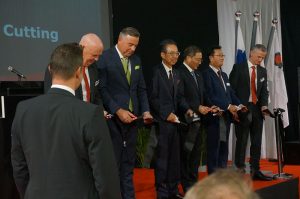
Opening ceremony (center: Chairman Tsutomu Isobe, right: Japanese Ambassador to Finland Okada Takashi, President Takaaki Yamanashi).
At the ceremony, Representative Director and Chairman Tsutomu Isobe emphasized, “We have strengthened the factory both in terms of space and equipment. Europe has a particularly high demand for automation, and local supply can shorten delivery times.” Okada Takashi, the Japanese Ambassador to Finland, also attended the ceremony and expressed his pride in the cooperation between the two countries, highlighting the significant contribution to the automation of global manufacturing.
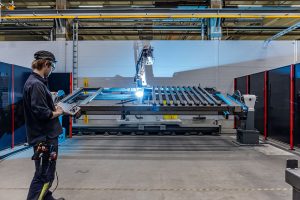
Significant labor savings through automated welding processes.
Automation equipment refers to systems installed on sheet metal processing machines such as laser cutting machines and bending machines, including stockers for sheet metal materials and picking devices for parts. As the size of sheet metal processing machines has increased in recent years, the size of automation equipment has also become larger. Transporting such large equipment from Japan posed problems not only in terms of delivery times but also in terms of transportation efficiency.
To expand its market share in Europe, where demand for automation and labor-saving solutions is high, it was necessary to expand its supply base. Currently, more than 60% of laser processing machines in the European market are equipped with automation devices. For combined machines that include both laser and punching functions, the automation rate is even higher, around 90%, in order to maximize their utilization.
At the entrance of AAE’s factory, there is a whiteboard for improvement suggestions. Employees use it to write down ideas they come up with during daily work. “We receive 600 suggestions annually from our 200 employees, including small things like changing the stock place of screws,” proudly explains Matt Wood, EU Product Promotion Manager at AMADA UK.
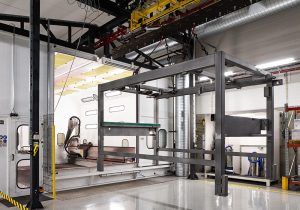
Two robots working in tandem for powder coating.
The welding area is well-lit, clean and well-organized, providing another example of improved working conditions based on employee suggestions. “There is a global challenge to recruit skilled workers, including welders, which affects both us and our customer companies,” says Wood.
AAE is also fortunate in terms of hiring and retaining employees. Pedersöre, where the factory is located, is a suburban area in Finland with a low population density, making it relatively easier to hire technical personnel and maintain low turnover rates due to the lack of manufacturing industries in the region.
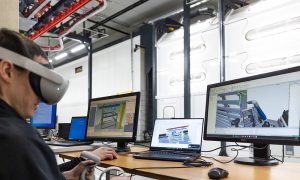
VR goggles used to teach powder coating processes.
The use of advanced robotics is characteristic of AAE. The welding process uses an automated system with vertical articulated robots from ABB of Switzerland. The factory has two machining stations, allowing one station to be set up while the robot welds at the other, reducing labor hours by 10 hours per automated shelf.
The painting process is also automated. Previously, solvent painting was done manually, but now the entire process, from pre-treatment with sandblasting to powder coating and heat treatment, is automated using vertical articulated robots. The painting process uses two AMADA colors – red and black – and the changeover between colors takes 15 minutes. The painting room is fully unmanned, and unused paint is collected and reused. Outside the painting room, engineers use VR (virtual reality) goggles to teach the robots their paths as if they were playing a game.
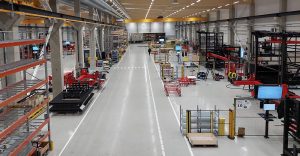
Assembly area expanded threefold.
Founded in 1979, LKI Käldman, AAE’s predecessor, began supplying automation equipment to AMADA in 1995. The strong relationship continued, leading to AMADA’s acquisition of a 20% stake in 2003 and full ownership of the company in 2019.
AMADA aims to achieve global sales of JPY 500 billion by fiscal 2030. The company’s European sales in fiscal 2022 were JPY 65.9 billion, with plans to increase this to JPY 110 billion. AAE, a strong asset for tapping the strong demand for automation in the European market, plans to expand its workforce from the current 200 employees to 300 by around 2028.
To be continued in Part 2.
By: Shu Yasumi, Editor-in-Chief, SEISANZAI Japan